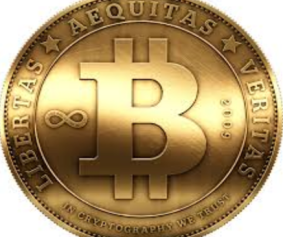What You Should Know About “Bitcoins”
Thursday, January 23rd, 2014 @ 7:23PM
Between the Lines
by Gary D. Halbert
If you’re like me, you’ve probably heard a lot about Bitcoins but you don’t really understand what this new crypto-currency is or how it works. One of my favorite writers, Robert Samuelson, posted an interesting piece about bitcoins on RealCLearPolitics.com this week. I have reprinted the article below. I think you’ll find it informative.
QUOTE: Bitcoin: Is It a Boom, Or a Bubble?
The baffling Bitcoin boom is either an exercise in self-delusion – a high-tech Ponzi scheme that will come crashing down – or an imaginative new Internet technology that could change how millions of people around the world conduct everyday business. There is little middle ground.
Called a “digital currency,” Bitcoin originated in early 2009 with a software program written by Satoshi Nakamoto. Who is Nakamoto? Good question. It’s a pseudonym, and we don’t know who’s behind it… But what seems clear is that Nakamoto owns bitcoins worth “hundreds of millions of dollars,” says Jerry Brito, an analyst at the Mercatus Center of George Mason University and a Bitcoin enthusiast.
You can do two things with bitcoins: buy stuff, just as with traditional money; and hold them as an investment or speculation, hoping their price will rise.
Some shopping does occur with bitcoins. The first retail transaction is usually attributed to Laszlo Hanyecz, a computer programmer in Florida, who in May 2010 persuaded someone to order two pizzas for him in exchange for 10,000 bitcoins. Recently, Overstock.com – an online retailer – agreed to accept bitcoins; the Sacramento Kings basketball team will do likewise. According to coinmap.org, about 2,600 stores and businesses worldwide accept bitcoins, with concentrations in Western Europe, California and New York.
Still, bitcoins today are mainly a financial gamble. They’re traded on electronic exchanges, where price swings have been mind-blowing. When Hanyecz bought his pizzas, bitcoins were perhaps worth less than a penny each. In late 2013, prices exceeded $1,000. Short-term variations are enormous. Here’s one stretch in 2013: On April 6, the price was $142.63; on April 16, $68.36; on April 30, $139.23, according to data from coindesk.com. Prices now bounce between $800 and $900. At $800, Hanyecz’s pizzas would cost $8 million.
Basic economics teaches that money serves three roles:
● a medium of exchange, buying and selling;
● a store of value, something whose stability protects wealth;
● a unit of account, a way to price goods and services.
Bitcoin’s wild price fluctuations seem disqualifying on all counts. A business that accepts bitcoins takes an immediate risk that the funds will lose 5 percent or 10 percent of their worth before they can be converted into traditional money (dollars, euros, yen). By this logic, retail uses will remain limited. For similar reasons, bitcoins flunk as a store of value and unit of account.
What has boosted bitcoins’ price is speculative mania and specific events that increased demand. Cyprus’s financial crisis in 2013 reportedly caused European investors to convert euros into bitcoins as a way of evading controls on moving money abroad. Prices rose when Baidu – China’s Google – said it would accept bitcoins in some situations. Because it’s hard to identify owners, bitcoins may also lubricate crime, money-laundering and tax evasion. Bitcoins were used on “Silk Road,” a Web site that peddled illegal drugs.
To skeptics (including this writer), Bitcoin seems a collapse waiting to happen. There’s nothing behind it except clever programming. It’s extremely vulnerable to hostile government actions. Baidu reversed its decision after China’s central bank criticized Bitcoin; Germany’s Bundesbank has done likewise. The FBI pierced Silk Road’s anonymity and shut it down. Could bitcoins be worth $80 or 80 cents instead of $800?
Hold it, retort Bitcoin’s defenders. The standard “bubble” analogy distorts Bitcoin’s technology and potential.
It won’t replace the dollar or the euro, says Brito of the Mercatus Center. Instead, Bitcoin represents a payments technology that competes with Visa and PayPal. Against these, he says, Bitcoin has some huge theoretical advantages. Except for cash, most payment systems require a middleman (usually a bank) to move funds from the buyer’s account to the seller’s account. By contrast, buyers and sellers of bitcoins deal directly with each other. Bitcoins are deposited automatically in the seller’s electronic “wallet.” Savings could be sizable, Brito says.
Jeremy Allaire is chief executive of Circle Internet Financial, a start-up company striving to commercialize Bitcoin. With time, he thinks Bitcoin’s price volatility will subside or be hedged. He says that Bitcoin’s frantic trading is not just mindless speculation. “People are making a bet,” he says. The bet is that Bitcoin will emerge as a global payment platform operating through smartphones, tablets and other devices. If Bitcoin captures even a small share of the multitrillion-dollar global payment market, its current price will be dramatically undervalued, he says. There are now about 12 million bitcoins; the underlying software is supposed to stop production at 21 million.
Ours is an era when technologists are leading us in directions that neither they nor we fully understand. That’s why it’s so hard to know whether Bitcoin represents constructive innovation – or just another old-fashioned swindle. END QUOTE
I’ll probably have more to say about bitcoins in the future. For now, caveat emptor!!
Posted by AIA Research & Editorial Staff
Categories: Between the Lines


